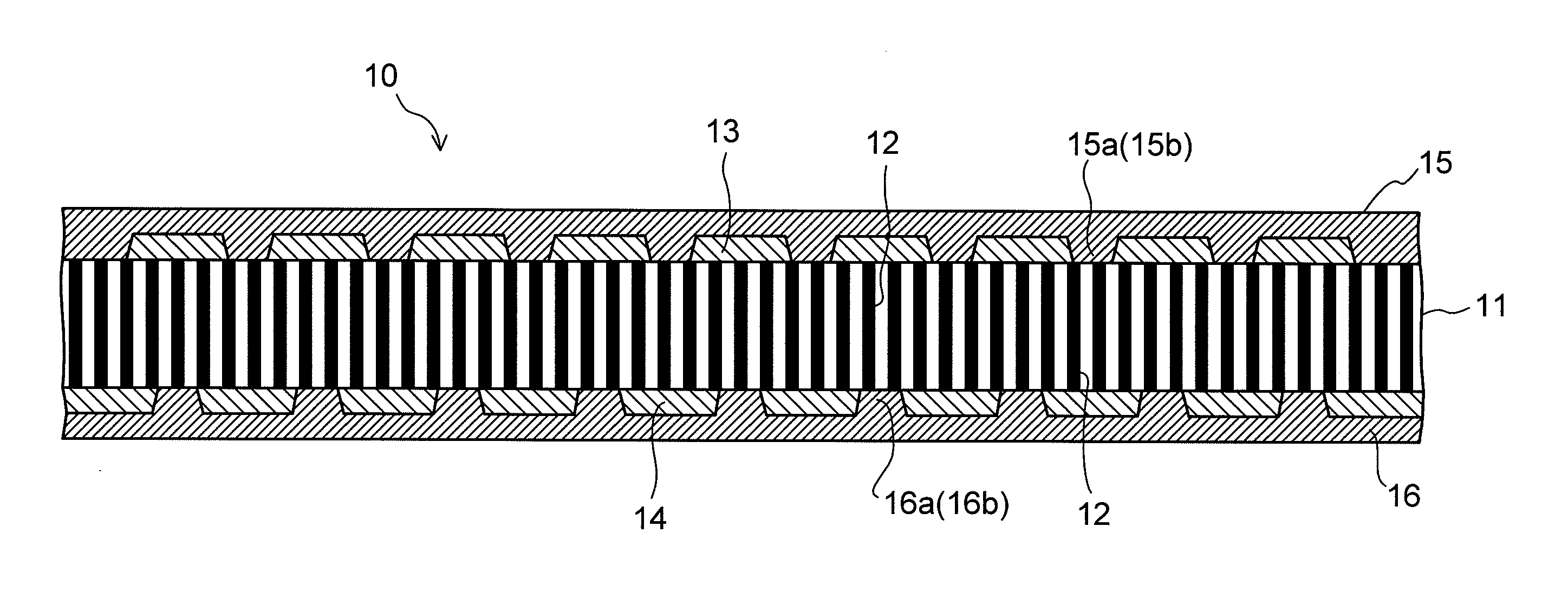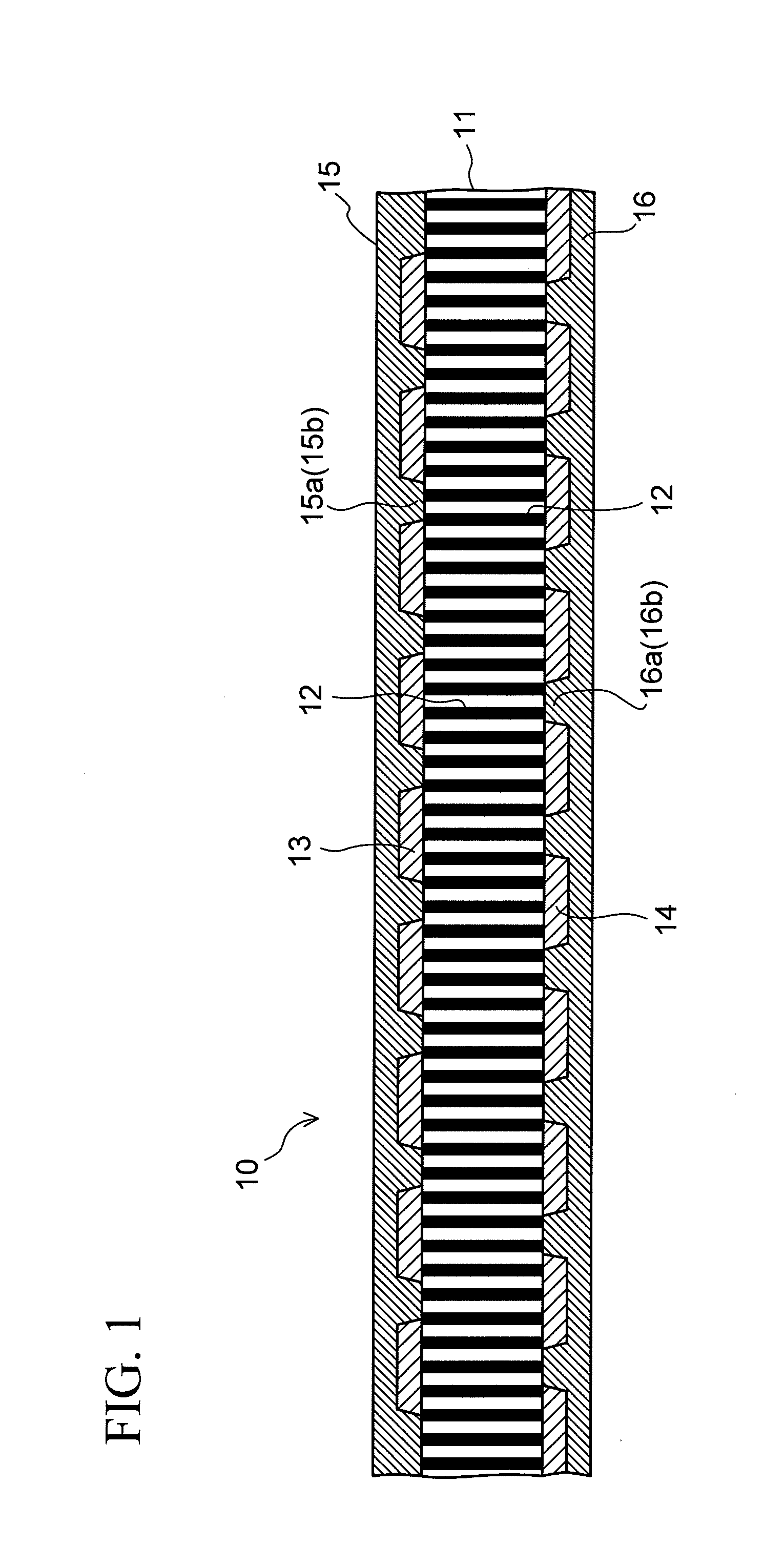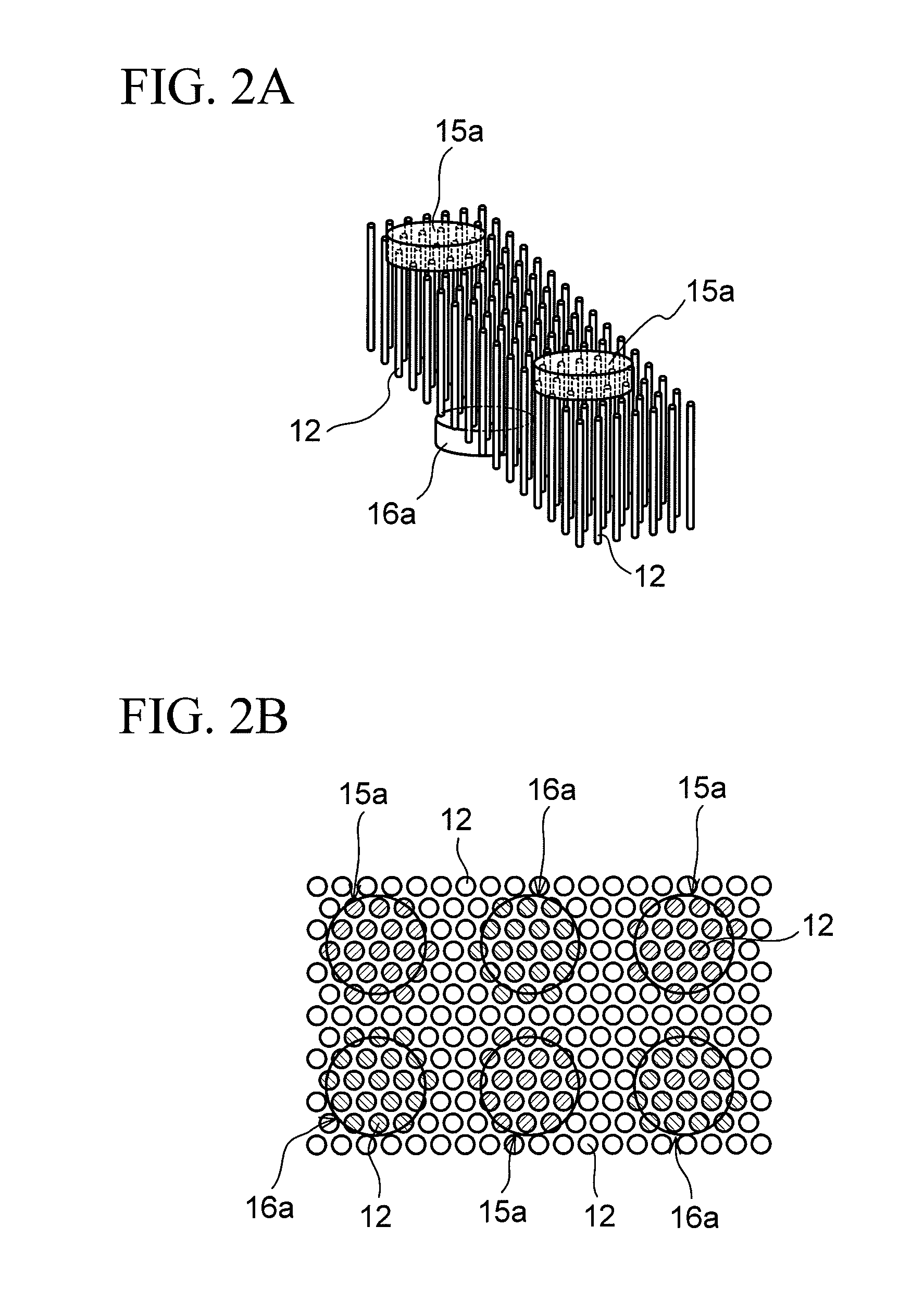Capacitor and method of manufacturing the same
a technology of capacitors and capacitors, applied in the field of capacitors, can solve the problems of crosstalk noise occurring among wirings, fluctuation of electric potential, and likely frequency-related crosstalk noise, and achieve the effect of reducing costs
- Summary
- Abstract
- Description
- Claims
- Application Information
AI Technical Summary
Benefits of technology
Problems solved by technology
Method used
Image
Examples
first embodiment
[0032]FIG. 1 is a cross-sectional view of a structure of a capacitor according to the present invention. Although capable of being used as a single product by itself, a capacitor 10 of the present embodiment is basically intended to be used as being buried in a wiring board (package) on which an electronic component (chip) such as a semiconductor element is to be mounted.
[0033]The capacitor 10 of the present embodiment has a basic structure including: a dielectric substrate 11 having a desired thickness; and filamentous conductors 12 each having a small diameter, penetrating through the dielectric substrate 11 in a thickness direction thereof, and being disposed densely at predetermined intervals. Specifically, the filamentous conductors 12 are formed in such a way as to expose ends thereof from both surfaces of the dielectric substrate 11, respectively. For the dielectric substrate 11, it is desirable to use a material having a highest possible permittivity, and an inorganic materi...
second embodiment
[0060]FIG. 5 is a cross-sectional view showing a structure of a capacitor according to the present invention.
[0061]A capacitor 20 (FIG. 5) of the present embodiment is different from the capacitor 10 (FIG. 1) of the first embodiment in terms of arrangements with respect to the following points: conductor layers 25 and 26 formed respectively on both surfaces of the capacitor 20 are each divided into two conductor layer regions in the illustrated example; insulating layers 23 and 24 respectively formed on the surfaces of the dielectric substrate 11 are exposed at portions where the conductor layers 25 and 26 are each divided into the two conductor layer regions; and an electrode 25b out of multiple electrodes 25a and 25b concurrently connected to the conductor layer 25 and an electrode 26b out of multiple electrodes 26a and 26b concurrently connected to the conductor layer 26 are disposed so as to face each other with the dielectric substrate 11 in between, and are electrically connec...
third embodiment
[0067]FIG. 6 is a perspective view schematically showing a configuration of a main portion (the filamentous conductors 12 and electrodes 35 and 36 connected thereto) of a capacitor 30 according to the present invention. FIGS. 7A and 7B show a structure of the capacitor 30, and are views showing cross-sectional structures taken along the line A-A′ and the line B-B′ in FIG. 6, respectively.
[0068]The capacitor 30 (FIGS. 7A and 7B) of the present embodiment is different from the capacitor 10 (FIG. 1) of the first embodiment in terms of arrangements with respect to the following points: the electrodes 35 and 36 to be disposed respectively on both surfaces of the dielectric substrate 11 (having the filamentous conductors 12 formed in such a way as to penetrate through the dielectric substrate 11 in a thickness direction thereof) are formed to have a comb-pattern shape; the electrodes 35 and 36 respectively include narrow line portions (comb-tooth portions) 35a and 36a, which extend parall...
PUM
| Property | Measurement | Unit |
|---|---|---|
| diameter | aaaaa | aaaaa |
| size | aaaaa | aaaaa |
| size | aaaaa | aaaaa |
Abstract
Description
Claims
Application Information
 Login to View More
Login to View More - R&D
- Intellectual Property
- Life Sciences
- Materials
- Tech Scout
- Unparalleled Data Quality
- Higher Quality Content
- 60% Fewer Hallucinations
Browse by: Latest US Patents, China's latest patents, Technical Efficacy Thesaurus, Application Domain, Technology Topic, Popular Technical Reports.
© 2025 PatSnap. All rights reserved.Legal|Privacy policy|Modern Slavery Act Transparency Statement|Sitemap|About US| Contact US: help@patsnap.com



